Back in 2018 I was a broke student living in Edmonton. One summer evening, I serendipitously stumbled into a bar after school. This bar happened to be one of the many venues for that year’s Fringe Festival. I don’t remember any details about the artist or the show, but it left me absolutely eager to binge on more Fringe shows.
What is Fringe, you ask?
Fringe Festival is a performing arts festival that takes place once a year in many cities across the globe. The festival provides a platform for performers with eccentric ideas and artistic talents that defy conventional genres. Fringe Festivals provide the opportunity to immerse oneself in experimental theater with the ticket price going directly to the artists.
As mentioned above, I am an avid fringer: each year, I set aside funds to buy a multi-use Fringe pass that connects me to the works of a plethora of artists. My first two Fringe seasons were in Edmonton – recognized as the most popular Fringe Festival in North America. I now live in Vancouver which showcases a considerable variety of talent from the fringes. The 2023 season of Vancouver Fringe hosted more than 85 shows across various venues on Granville Island from Sept 7th to Sept 17th. I purchased a Fringe pass for 10 shows – most of which were simply amazing, while some were duds. And yes, I am bursting to share my reviews. I am listing them in the order of viewing – the serial numbers don’t represent a value judgment of any sort.

The Pigeon and the Dove: A History of Hatred and Love
“The Pigeon and the Dove: A History of Hatred and Love” was a lo-fi folk opera featuring Vancouver based artists Carolyn Victoria Mill and Reid Jamieson. Inspired by fellow Vancouverite Dr. Gabor Mate’s groundbreaking scientific insights into addiction and the musical wisdom of Indigenous legend Buffy Sainte Marie, the show tapped into the rational impulses of its mostly well-to-do audiences to challenge our attitudes against the city’s most vulnerable residents. The multi-faceted show was part science talk that shed light on society’s unfair stigma against pigeons, part activism towards the cause of Vancouver’s housing and substance addiction crises and part autobiography of Carolyn Mill; interspersed with musical renditions by Reid Jamieson. His songs threw light on the tribulations of living in the margins of a heartless economy.
The set design, lighting and props in the show were elegant but minimal – the message was the star. Reid looked dapper – dressed in all-white like a dove. Carolyn was a graceful embodiment of the common pigeon with a delicate pair of gray wings complementing the green and purple strands of ribbons in her hair. A compassionate ode to the invisibilized struggles of unhoused LGBTQ youth, Indigenous women, veterans and racialized people – young and old, this show went on to win the prestigious Stir Social Impact Award.
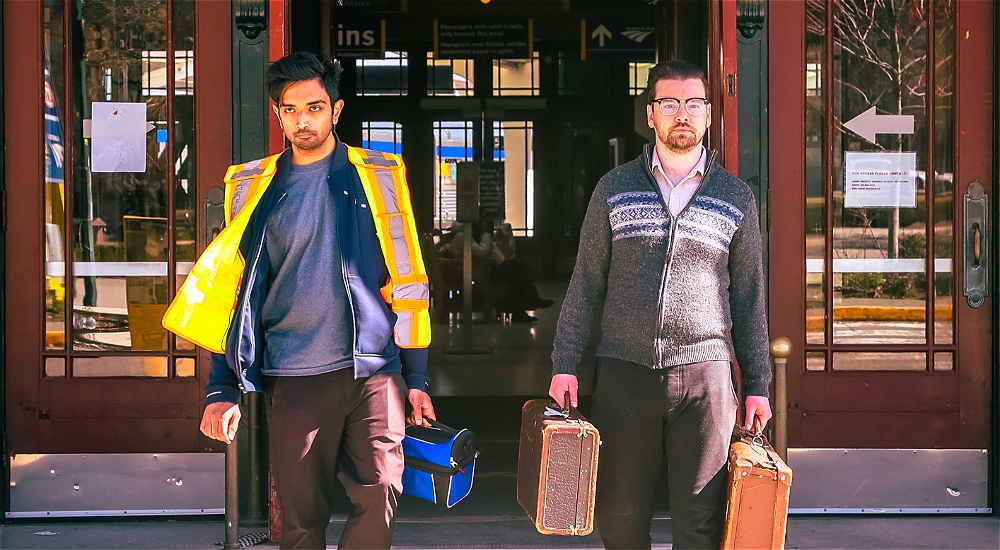
The Emigrants
This theatrical masterpiece was originally written in 1975 by an acclaimed Polish playwright named Sławomir Mrożek. The play occurs in a dingy basement, on New Years Eve and centers two foreign migrants. On the surface, the two roommates are poles apart. One person is intent on accruing money for his family back home; the other is only interested in grand philosophical reveries. Their contrasting personalities, value systems and cultural differences give rise to ascending tensions that take many dark turns. It soon becomes evident that despite their outward animosity, they are deeply alienated by their country of residence and have developed a sense of codependency with each other.
The Vancouver Fringe edition was directed by Cristiana Ripeanu, starring Akshaya Pattanayak and Jacob Machin as the fraught emigrants. As an immigrant myself, it was authentic in a very real sense to witness Akshaya’s portrayal of someone from India moving to a foreign land to make a living. The actors had the audience hooked: Machin with his emotive outbursts and Pattanayak with his comical physicality. The props were a creative assortment of DIY furniture and bare necessities. The lighting arrangements were ingenious; especially a moody light bulb that intensified the plot’s many dark turns. The venue was overcrowded – the stuffy ambience possessed an eerie resemblance to a dingy, unlivable basement unit.
The best shows at Fringe are those that leave you to ponder on existential questions much after leaving the venue. “The Emigrants” did that for me.
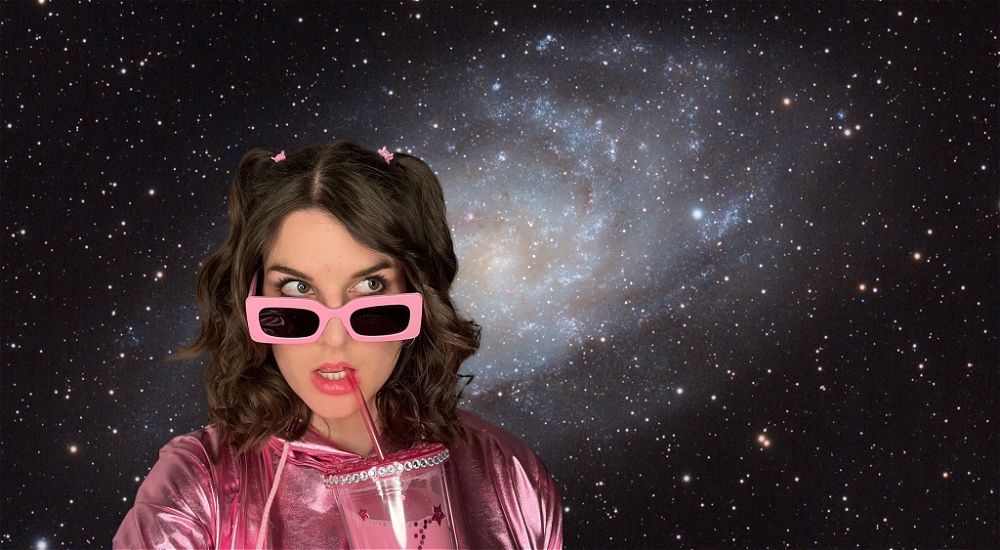
Long Live Lexi Bezos
This one-person theatrical showcase was billed as a satirical take on the materialistic greed of humankind. Set in a dystopic futurescape of 2223, Sophia Saugstad played the role of Jeff Bezos’ direct descendent who has successfully colonized outer space. The premise held so much promise that was woefully underutilized. Sophia’s comical portrayal of Lexi Bezos was steeped in caricatures of the rich white girl trope that simply lacked originality. The stage lighting was executed well, the settings of a ravaged Earth and of the ostentatious space pod were pretty convincing. But really, this show needs a great deal of workshopping to improve its bland screenplay.
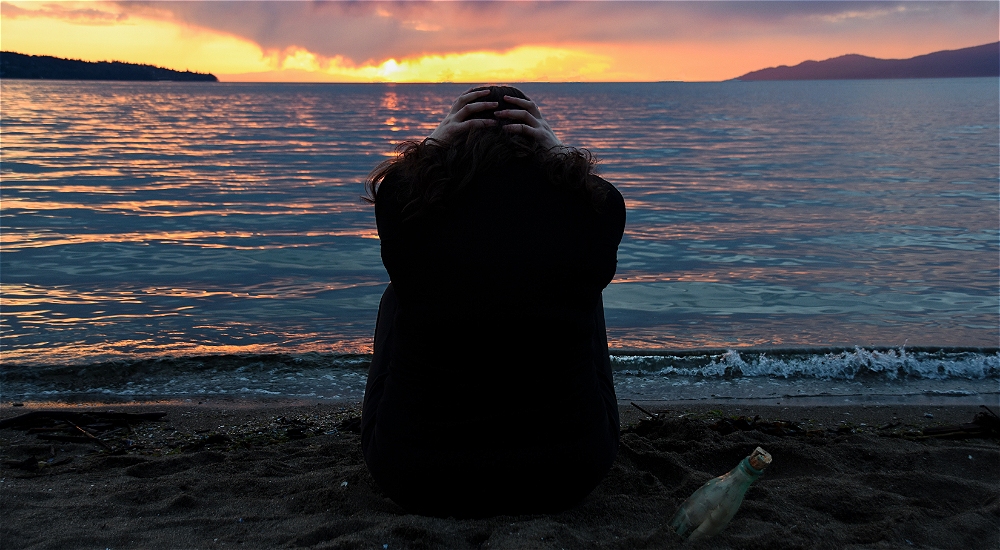
Wrecked: A Solo Show
Samantha Levy’s solo show narrated the story of a woman awash in complex grief after the death of an abuser – oh, he also happens to be her father. Over the course of 30 minutes, the artist showcases her ability to convey the complex emotions that accompany such a bittersweet loss. I was in awe of her talent as an actor, but the show did not grip my entirety. That being said, I am excited to see what more Levy might have to offer to her future audiences.
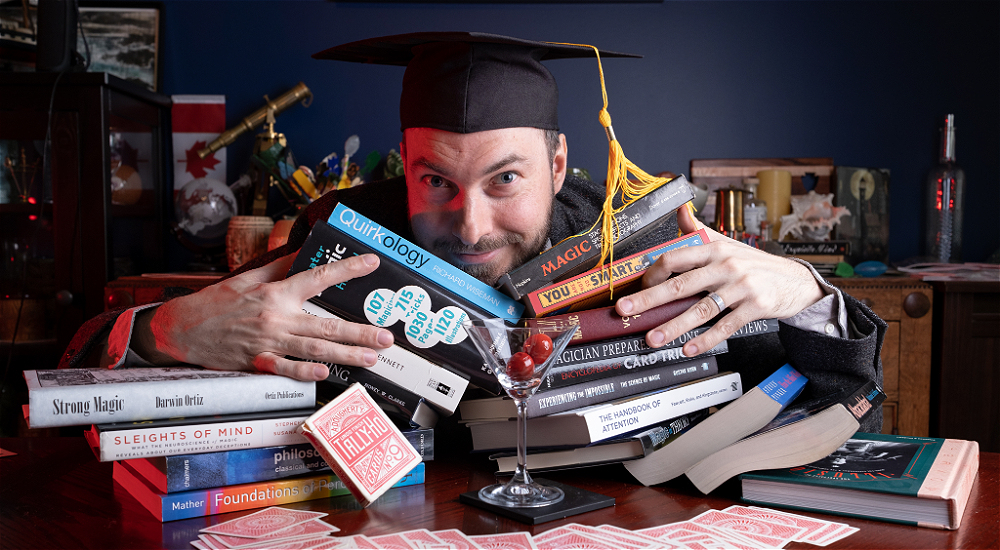
Magic Dropout
A quirky magic show by someone that studied the psychology of magic! This was the premise of Rob Teszka’s Fringe show. The former curious child and science prodigy set out on an academic quest to discover secrets of the human brain and magic tricks. However life rewarded him with humbling failures, an inexhaustible ability to wow people with his intellectual spiels and yes, magic tricks! Teszka’s show featured a bunch of lively demos with the help of a few members in the audience. He was witty, observant and used his gift of gabbing to distract everyone from catching him at his tricks. As he doled out critiques of academia’s toxic culture that led to his burnout, the magic tricks non-verbally demonstrated Teszka’s profound understanding of human psychology and his talent to influence another human’s seemingly free-willed actions. The story-telling needed some finessing, which he made up for with his crowd presence and smart trickery. “Magic Dropout” convincingly merged science nerdery and magic tricks into a tale of embracing failures and self-acceptance, leaving the audience gasping in awe.
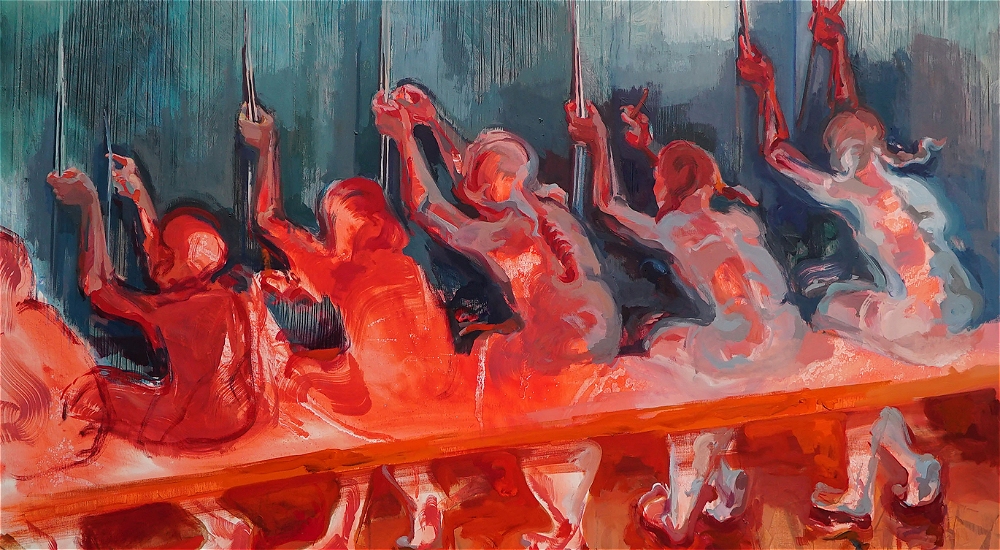
Three Acts of a Woman: Birth-Life-Tomorrow
This avante-garde episodic play narrated three stories of Iranian women resisting and subverting the oppressive shackles of patriarchy. Created by a Vancouver-based playwright Majid Tafreshi, the plot unfurled various trials and tribulations of female suffering. The spirits of the three episodes were drawn from the historic tales of Joan of Arc, Antigone and Medea. Each act covered different themes – a forced marriage gone wild; a sister’s act of courage and martyrdom in the face of state suppression; a worker’s ultimate act of resistance against her boss turned rapist. The acts were peppered with music and singing. They were powerful yet piercing songs of celebration, resistance, mourning and protest.
I tried but failed to deduce if the characters of each story were related in any way. However, I was able to appreciate the weaves of collective female solidarity that formed the backbone of every episode. The cast consisted of 13 actors who were present on stage at all times. Those who weren’t part of a scene simply offered witness from their seats. This made it hard for me to stay immersed with the emotions being portrayed in some scenes. But here’s where the subjective experience of fringe theater comes into play. My partner was enthralled by the show, the end left him in tears.
It is clear to me that the playwright has paid great attention to the craft of dramaturgy. It is the kind of show where reviewers more qualified than me might guide the audience on the symbolic relevance of the sound, light and visual motifs explored in the play. Or it could simply be a gap in my understanding of the deeply cultural context of this play. As you can surmise, I have very mixed feelings about the production.
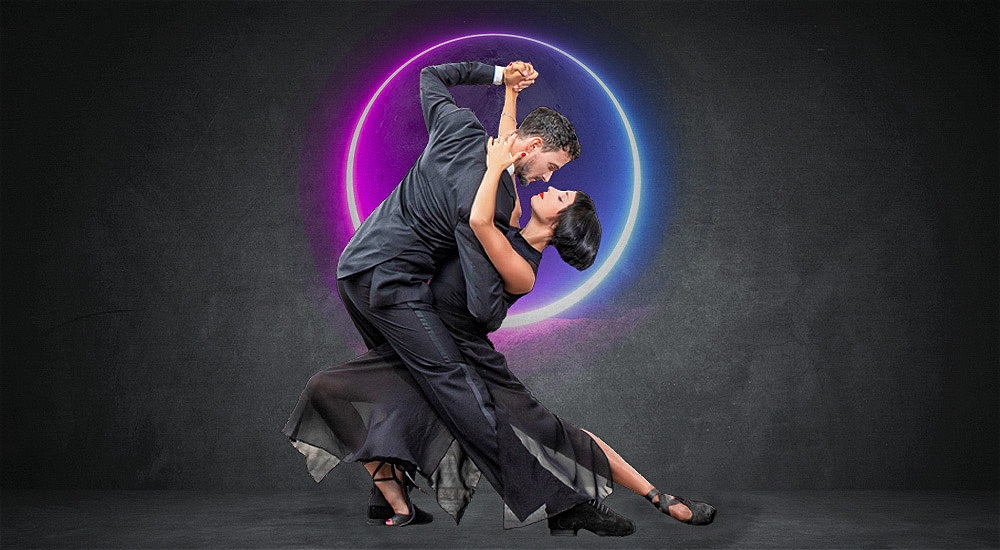
Tango in the Dark
While selecting shows to watch, I tend to have varying levels of expectation based on the theme and my interest in the subject matter and genre. For “Tango in the Dark”, I went in with very high expectations. Spoiler alert: They surpassed my expectations, leaving me in a mesmerized daze.
The dance show, produced by Argentina-based company, Pointe Tango, featured two exceptional performers – Erin Scott-Kafadar and Alexander Richardson. The dynamic duo seamlessly fused classical ballet and Argentine tango, with Scott-Kafadar dancing en-pointe on one foot and high-heeled on the other! A movie screen behind the dancers featured visuals shot in Buenos Aires, adding an immersive dimension to the live gyrations. The audience was transplanted across myriad ambiences including a swanky dance bar, the couple’s apartment, a breezy night under the stars and some imaginary dreamscapes.
The dancers indulged everyone on a vicarious speed-date of sorts: each dance sequence showcasing moods ranging from meditative to outright titillating. Scott-Kafadar managed to change into new costumes with the same pace as her swings and swirls. Richardson’s dextrous lifts were only overshadowed by his flamboyant choreography. I experienced the utter joy of watching a live show (especially since the pandemic) everytime the audience spontaneously erupted into raucous applause in the middle of a sequence. Trust me, it happened more times than I could keep count. The prodigious duo successfully demonstrated that it only takes one-pointe-two to tango! The show went on to claim the prestigious Volunteer Choice Award.
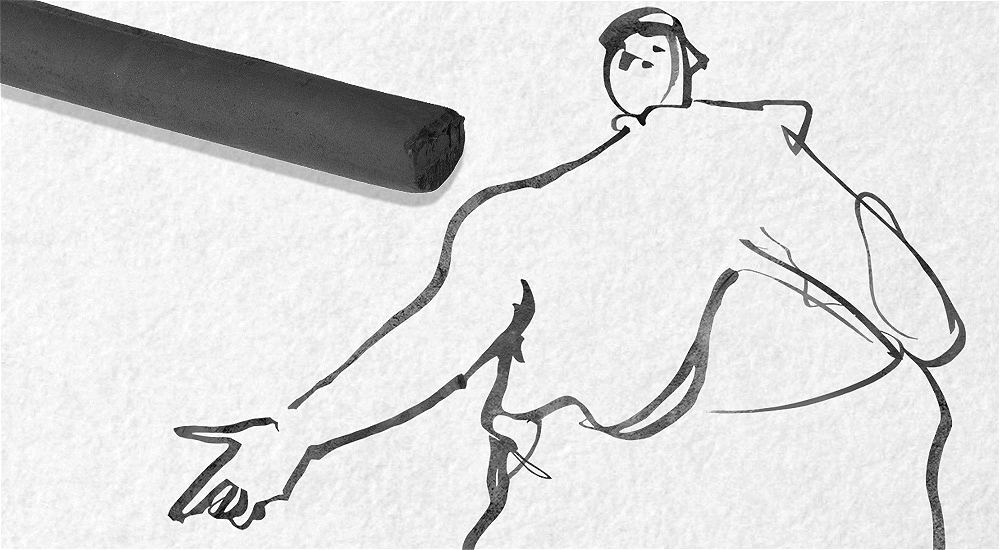 muse: an experiment in storytelling and life drawing
muse: an experiment in storytelling and life drawing
As an arts reviewer, this show was the most intriguing one for me to attend. Why? Because, the artist, Cameryn Moore turned her audience into the artists who observe and sketch while she presented her vulnerable self as the muse. In addition, the muse indulged in free flowing conversations about her life in Berlin, giving everyone a chance to appreciate Moore inside-out.
The muse modeled a sense of uninhibited joy that made it easy for me to lower my guard and engage in sketching without judging the outcome. Eventually, I was quite proud of my sketches. Equally impactful were Moore’s frank recollections of experiencing fat shaming and ageism, contrasted with her embodiment of self-love and body positivity. I came out of the venue with a sense of gratitude and love about my own body. To nobody’s surprise, the show was a runner-up for the Best of the Fest Award!
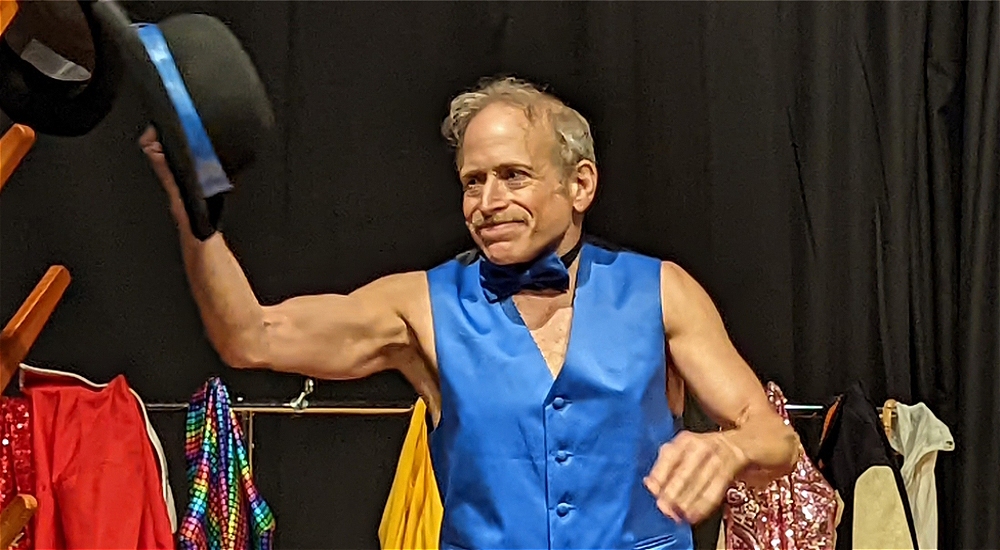
Confessions of an Aging Twink
Coming out as Queer can be a messy, life-long process. Artistic expressions of queerness invoke a powerful form of defiance, of collective solidarity that acknowledges the suffering, resistance, protest and joy that has come to define the LGBTQI movement over the last few decades all over the globe. “Confessions of an Aging Twink” was one such autobiographical account of vaudeville virtuoso Daniel “Pippin” Borson, from Eugene Oregon.
In this one-man musical, the audience was treated to dance numbers and theatrical recollections of the artist’s coming of age as a gay man in 1960’s West Hollywood. Borson’s narrations of his intimate yet risque encounters are interspersed with numerous cultural references to American TV shows and West Hollywood’s LGBTQ people’s history. Oh! and his songs parodied popular Broadway musicals. The show was an ode to the cultural memory of a generation of queer Americans, many of whom did not survive the devastating AIDS epidemic in the 1980’s.
As an elder gay, Borson paid a comical tribute to the ever-evolving queer lexicon by emphasizing his claim to the label – Panromantic-Homoerotic-Polyamorous-Demisexual. But he bemoaned his diminished prospects on online dating apps. Despite that, his humorous banter, dapper fashion sense and sizzling song and dance sequences demonstrated that he’s so damn fuckable, holy gobsmacked popsicles! But also, this show left me very much in awe and in love with Borson’s artistry and passion for storytelling.
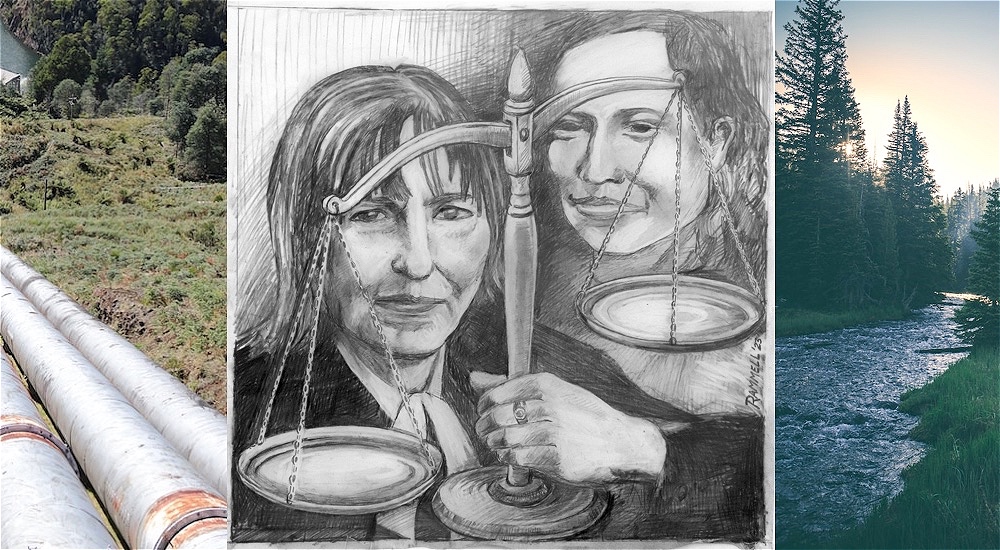
The Judge’s Daughter
“The Judge’s Daughter” takes an insider’s peek into the issue of colonial repression resulting from an outdated judicial system such as the one currently practiced in British Columbia. But this is not your run-of-the-mill courtroom drama. Playwright Mairy Beam situates the story in the family home of a BC Supreme Court judge named Judge Kelly Saint Patrick. Taking inspiration from real life events, this 50 minute long play explores the tensions that arise in the personal life of the judge after she hands out a severe sentence against an Indigenous Elder for their peaceful activism as a land defender.
The plot was absolutely riveting and so was the acting by the 4-member ensemble. Jennifer Fahrni played Judge Patrick. She stunningly portrayed the misguided determination of a careerist whose moral conscience has been clouded by professional ambitions. Linden Banks, who played the role of the judge’s husband, possessed a poised restraint. His role as a loving father and supportive spouse made many empathize with his ethical quandary. The titular role was played by Sidney Klips. Her role invoked hope about the changing attitudes among the youth who are forced to grapple with the inherited legacies of colonialism and unchecked capitalist greed. Arsham Farasat was the climate activist cum partner of the judge’s daughter. With his assertive voice and unwavering sense of conviction, he represented the collective conscience rallying for transformative justice in the face of climate change – the most expansive challenge to have ever confronted humanity.
The other important component of the play was the audience. There were interactive moments where the audience was forced to respond and react to the moral conundrums that were being addressed on stage. The play was a creative exercise in educating the apolitical or indifferent audience regarding the radical concept of decolonizing one’s perceptions of moral rights and wrongs.
The children of today and the near future do not enjoy the luxury of delineating personal choices with society’s politics. Artistic endeavors that reflect humankind’s sober reality have the potential to stir everyone towards the cause of restoring human connections with fellow humans, the lands, waters and forests that nourish and shelter everyone. I really hope “The Judge’s Daughter” receives many invitations to perform at theaters in and around British Columbia.
Concluding musings
This year’s Vancouver Fringe left me quite content about my pick of 10 shows. You might have noticed that my picks included one-person acts as well as ensembles spanning genres such as comedy, musicals, dance, magic shows, political dramas, speculative theater and observational muse-ing. That being said, I had to fight a mental battle to overcome that tinge of FOMO about missing some of the shows which received mainstream accolades and awards.
This article would be remiss if I did not mention my favorite picks. So here goes:
Talent that I wish to watch again : Tango in the Dark
Emerging talent to lookout for : Akshaya Pattanayak (The Emigrants)
Show that I shall gush about forever : Cameryn Moore’s muse
Best musical commentary : The Pigeon and the Dove: A History of Hatred and Love
Best social conversation starter : The Judge’s Daughter
– Annapoorna Shruthi
